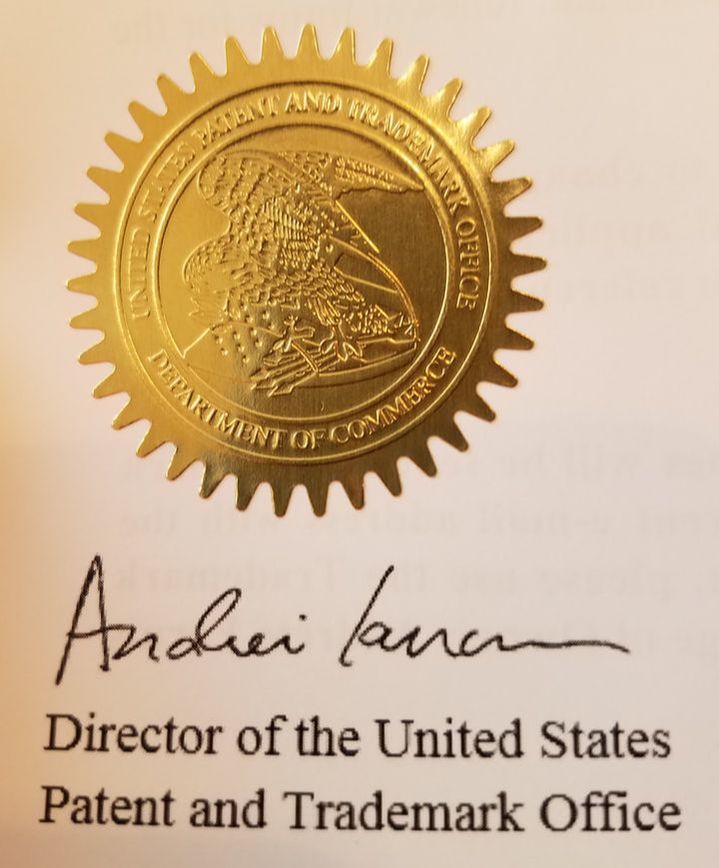The US Trademark Office Wants to Make Electronic Filing Mandatory – Trademark Owners Take Note5/31/2018 Yesterday, the U.S. Patent and Trademark Office (USPTO) published proposed amendments to the Rules of Practice in Trademark Cases. The proposed changes are significant for anyone who deals with the Trademark Office directly, particularly trademark owners who choose to work with the USPTO without an attorney. See the Notice of Proposed Rulemaking here. First, a little background When I began practicing law in a Minneapolis firm in the 1990s, we were still filing trademark applications and related documents on paper. Early in my career, I remember the USPTO introducing the Trademark Electronic Application System (TEAS), which allowed us to file trademark applications electronically. This was followed by the Trademark Status and Document Retrieval (TSDR) system, where we could check the status of our trademark cases and view electronic records within the Office. These developments have streamlined the trademark application process and allowed trademark owners to manage their marks efficiently and effectively. The USPTO continues to strive to make the trademark application, registration, and maintenance process efficient and cost-effective. According to the USPTO, over 99% of applications under §1 and §44 of the Trademark Act are currently filed electronically. However, only about 87% of these applications are processed electronically end-to-end. In a push to convert the entire process to an electronic system, the USPTO has proposed to amend its Rules of Practice to require electronic filing through application prosecution and post-registration. Proposed Rules The USPTO’s proposed Rules would make almost all communication with the Trademark Office electronic. Specifically, the proposed amendments would:
Under these new rules, trademark applicants and registrants would be required to not only file the original application electronically through TEAS, but also submit all future correspondence relating to their applications or registrations through TEAS. Such correspondence includes, for example:
Regarding item #3, the email address you provide to the Office will be the address where the Office sends all correspondence relating to your trademark. In my practice, I often communicate directly with Trademark Examining Attorneys to resolve minor issues over the phone and/or through email. This practice is highly efficient and allows me to obtain trademark registrations for my clients very quickly. The new Rules would allow trademark owners and attorneys to continue this type of practice. These proposed Rules are open for comment through July 30, 2018. Potential Risks of Electronic-Only Processing The proposed rules introduce risks for trademark owners who handle their applications and registrations themselves. Under the new rules, the USPTO would send all correspondence via email. If an email transmission fails because, for example, the user’s mailbox is full, the user provided an incorrect (or outdated) email address, or the email provider has a service outage, the USPTO will not attempt to contact the correspondent by other means. This places the burden of keeping on top of trademark status squarely on the trademark owner. If the USPTO sent you an email, but you did not receive it, you are not excused from knowing what was in that communication. The proposed rules do provide some very limited scenarios under which the Office would consider paper correspondence: specific foreign applicants (designated under a treaty), and specimens for scent, flavor, or other non-traditional trademarks. There is also a procedure to petition the Office to accept paper submissions. However, these exceptions and petition procedures are limited. Practice Tips In light of these proposed rules, trademark owners should take steps to prepare for the possibility of electronic-only procedures at the Office. Here are 5 tips to consider:
Regarding item #4, the USPTO’s policy has always been that service outages do not necessarily relieve you of your obligation to submit documents on time. So, for example, if you wait until the date a submission is due to the Office, and the electronic service unexpectedly goes out (for example, your Internet, or even the USPTO TEAS system), you are not excused from complying with the deadline. Many of my clients have heard my cautionary tales of trademark owners who waited until a deadline to provide me with filing documents, only to have either the Internet service or TEAS go down. You can easily avoid unnecessary costs and hassle by filing documents before the deadline. Is your business ready for electronic filing for all of your trademark matters? You may want to consult a trademark attorney to provide you with guidance. Perhaps it is time to engage an attorney to manage your trademarks for your company. In addition to experience handling matters before the USPTO, attorneys have docketing systems that monitor Trademark Office records and track deadlines. Your trademarks are valuable assets for your company. Make sure you take steps to protect those assets.
0 Comments
Your comment will be posted after it is approved.
Leave a Reply. |
AuthorKarrie Weaver practices intellectual property, trademark, patent, and trade secret law. Archives
February 2021
Categories |
612.386.0565
Copyright 2021. Weaver Legal and Consulting LLC. | All rights reserved.
Website by RyTech, LLC
Copyright 2021. Weaver Legal and Consulting LLC. | All rights reserved.
Website by RyTech, LLC


 RSS Feed
RSS Feed